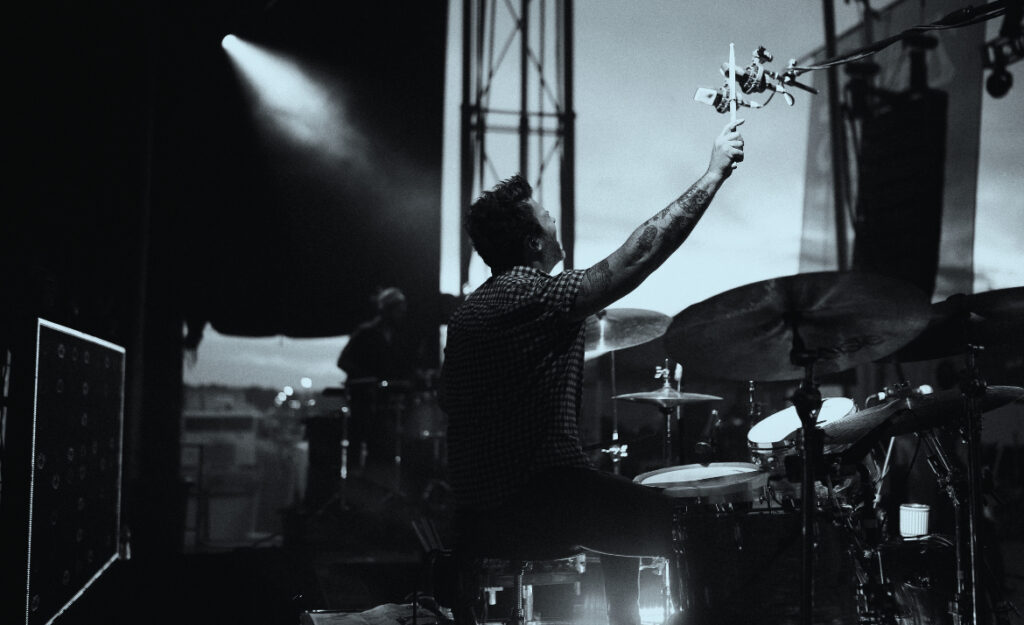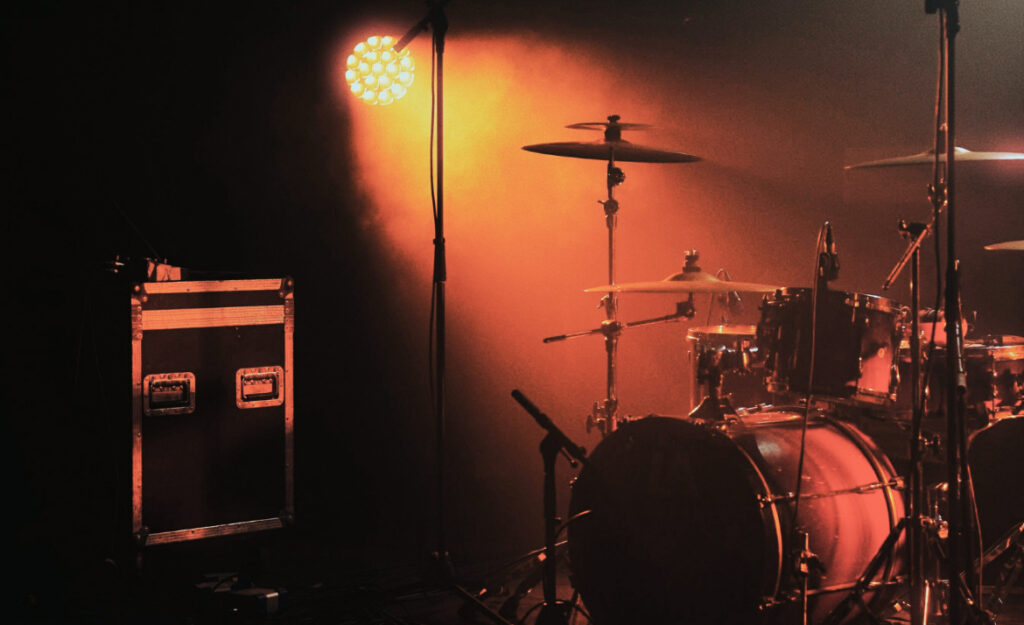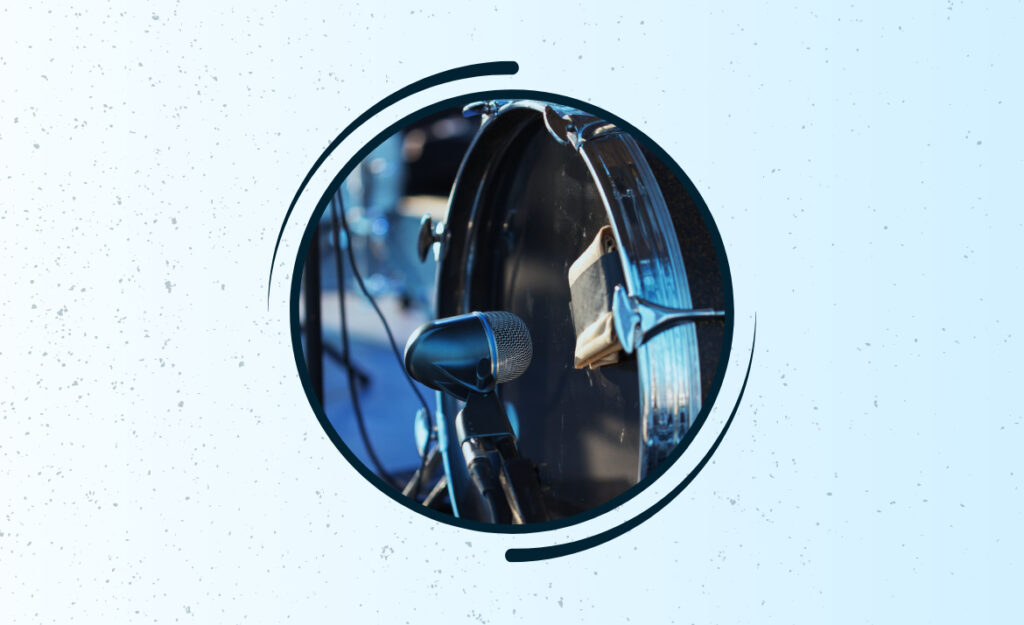When a drummer takes the stage, their energy and presence drive the music—yet they’re sometimes lost in the shadows. Thoughtful stage lighting coordination turns this around, making every beat visible and compelling to the audience.
Whether it’s a jazz combo in a cozy club or a thunderous rock band on a big stage, clear stage lighting can capture stick tricks, facial expressions, and the subtle interplay between limbs and drums. Visibility creates engagement and impact.
Explore key techniques for coordinating lights around drummers—learn actionable methods, discover gear tips, and see how lighting transforms the drummer’s role. Dive in for practical guides you can use for your own shows or practice sessions.

Defining Drummer Visibility through Focused Lighting Choices
Drummers benefit dramatically when stage lighting coordination puts them in the spotlight—literally. Strategic lighting allows the audience to track stick movement, hand technique, and intricate syncopation without straining their eyes.
Start by testing front and side lighting angles during sound check. Noticing how shadows fall on drum heads or cymbals gives you concrete info on adjustments to highlight both face and hands for every fill or solo.
Blocking Shadows and Ensuring Consistent Visibility
Placing soft white front lights about 30 degrees to each side prevents heavy shadows on the drummer’s face and kit. Softboxes or diffused LEDs work best, avoiding ‘raccoon eyes’ or harsh under-chin shadows.
Watch for any microphone stands or cymbal booms that might cast moving shadows. Adjust either the gear or lights—prioritize a clear sightline to the snare, toms, and hi-hat, so every key drum stays visible.
If drummers say, “I can’t see my own hands,” consider adding subtle, upward-facing footlights. This mirrors theatrical pit lighting, boosting clarity for intricate movements on dark stages or moody shows.
Highlighting Key Performance Moments with Accent Lights
Use spot or beam lights as accents for featured drummer moments. Position them behind or above, angled slightly forward, to make the drummer ‘pop’ visually during big fills, solos, or breakdowns.
Coordinate with the set list—set cues for these accents so the lighting operator knows when to trigger dramatic effects. A typical cue is, “Right after the second chorus, spotlight the drummer.”
Accent colors matter. Blue and white provide crisp clarity. Red or amber sets mood for softer sections but can muddy hand detail. Test with live action rather than static tests for best results.
| Lighting Technique | Pros | Cons | Best For |
|---|---|---|---|
| Front Softbox Lights | Clear, soft visibility; minimal glare | Requires space; limits wild stage movement | Clubs, festivals, clinics |
| Side LED Washes | Adds color and texture; enhances depth | May cast stick shadows if aimed poorly | Full band setups |
| Overhead Spots | Accents solos; dramatic impact | Risk of rim glare; needs skilled timing | Concert climaxes |
| Backlight Bars | Creates silhouette; energizes visuals | Can obscure technique; needs fill lights | Pop, rock, electronic bands |
| Footlights | Underglows hardware for effect | Easy to overdo; distracting glare if too bright | Theatrical, fusion, creative visuals |
Sequencing and Syncing Lights for Drummer-Driven Dynamics
Planning lighting changes that align with a drummer’s parts creates a visual rhythm as strong as the musical one. Stage lighting coordination here shines by marking dynamic shifts and emphasizing transitions.
Prepare by mapping out the set list and identifying drum features—signals like “four-bar build-up” or “syncopated break” should prompt targeted lighting changes. Share these sequences with the whole team for reliable execution.

Live Drum Dynamics: Real-World Steps for Better Balance
Explore proven strategies for live drum dynamics and achieve perfect band balance.Mapping Cues for Set List-Based Lighting Changes
Use a prewritten chart with timecodes or measure counts matched to specific lighting cues. An example row: “Song 3, Chorus 2, big floor tom fill: shift to bright white side spots.”
- Draft each lighting cue before rehearsal so you can revise on the fly—make a paper chart or a simple spreadsheet to communicate quickly.
- Describe cues in active language: “Fade up blue wash, then add spot at fill.” Clear action reduces confusion between the drummer and lighting techs.
- Hold a quick run-through where someone sits behind the kit for reference, checking each cue in real time so everyone learns timing by sight and sound.
- Encourage drummers to call out changes (“Next up: big snare roll!”) so lighting technicians stay alert for unscripted moments.
- Use electric tape or glow-in-the-dark marks for pedal triggers on the stage floor if the drummer has to activate certain looks mid-song. A real-world example: “Hit footswitch here for spotlight.”
After executing the cue sheet live, check footage and ask: Were transitions smooth and did all downbeats land with the right lighting punch?
Integrating Live-Control Lighting for Drum Interactivity
Connect a MIDI pad or footswitch to trigger key lighting looks, letting the drummer add strobe, color burst, or blackout on their own cues. This turns the drummer into a co-pilot with the lighting team.
- Assign the MIDI map so pad 1 triggers a red wash—drummer hits pad for a dramatic breakdown.
- Use pad 2 for a white strobe burst during key roots—great in genres like EDM or prog rock.
- Pad 3 can bring in blackout or fade-to-blue for subtle post-solo moments, highlighting transitions and silence equally.
- Integrate triggers into rehearsals so the drummer learns when each lighting command fits. They’ll sync lighting with music naturally over time.
- Make a quick-glance cheat sheet with pad codes and desired actions to tape on the floor tom.
Self-operating triggers give drummers live visual control, allowing authentic responses to improvisation or audience feedback in real time.
Balancing Color and Movement to Match Drum Styles
Pairing lighting color with the groove and genre keeps the visual mood in sync with the drummer’s playing style. For funk, pop, or jazz, different hues and patterns guide the audience’s emotional response and enhance performer energy.
Vary lighting movement for each part. Slow fades match steady ballads, while chases or strobe effects echo fast, syncopated patterns.
Creating Static vs. Dynamic Looks for Groove
Static looks—single hues—work well with precision-based drummers or tight funk grooves. Choose amber, blue, or warm white to match clean snare-and-hat work. The drummer’s crisp timing becomes the visual’s anchor.
Dynamic movement, like color chases or slow pans, amplifies rhythmic intensity. A salsa band might cue red-orange sweeps for high-energy timbales. Match movement speed to tempo: “Make chase match sixteenths on the ride.”
Whenever a drummer switches between swing and straight feels in a single song, set a cue: “Fade from blue to yellow on tempo change.” This script ensures that lighting follows drumming feel, bringing both together musically and visually.
Color Psychology and Drummer Spotlighting
Bright white and blue ‘open up’ the stage, making each rimshot or cymbal shimmer read clearly. Drummers who rely on ghost notes or brushwork should opt for soft cyan or pastel washes to keep detail visible.
Red or magenta effects signal high-energy or aggressive sections—ideal for punk or metal breakdowns, especially if the drummer is headbanging or standing up for stick twirls. Direct crowd attention with color as mood signage.
Warm colors like gold or soft pink work on ballads, bringing the kit’s wood and skin tones to the front. When lighting techs script these shifts, the drummer’s visual impact increases dramatically.
Directing Attention to Solo Breaks and Drum Features
Stage lighting coordination becomes most visible when the drummer steps up for a featured break or solo. Instant spotlighting, combined with subtle background dimming, creates a magnetic pull to the back of the stage.
For a clear build, plan a blackout for 1–2 bars before the solo. Then snap to a high-intensity focused spot as the drummer plays. This pattern trains audiences to watch for visual change as a cue for sonic highlights.
Scripted Solo Cues: A Sample Workflow
“At 2:30, cut all band lights for four counts. Bring up golden spot, centered over the snare.” This basic action plan removes ambiguity and reduces miscues mid-performance, ensuring the spotlight lands right as sticks go flying.
If synchronized video screens are present, coordinate lighting fades with screen graphics, amplifying the solo’s visual narrative. “Sync snare hits with white flash on main screen backdrop” is a common EDM instruction, drawing eyes stagewide.
After the last snare flourish, fade spot slowly and relay a backlight bar pulse to signal the rest of the band to return. Drummers and techs develop trust with repeated cues—they learn the rhythm of each light change.
Audience Communication and Real-Time Adaptation
Give the drummer a subtle cue, like a hand signal or nod from the lighting tech in their eyeline, as a five-second warning before a big solo lighting hit. Keeping crash mics angled to avoid feedback reduces stress for both drummer and tech.
If a crowd starts clapping along or chanting, the lighting operator can improvise: strobe to the tempo, pulse washes to match crowd rhythm, or gently fade to half-bright during interactive moments.
End feature moments by switching to a softer color and a wider wash—this ‘come-down’ visually resets the mood for the full band’s return and helps the audience refocus on ensemble energy.
Tailoring Rig Choices for Different Drumming Environments
The practical details of stage lighting coordination depend on the venue and message. A jazz trio in a wooden hall needs a different rig than a metal band with smoke machines and risers. Match lighting gear to the physical context and musical style.
Small stages limit angle options. Portable LED banks on each side, set to low intensity, give flexible coverage. For arenas, moving heads mounted high can track drummer movement and follow escalations in sound—especially useful for choreographed shows.

Rigging Guidelines for Quick Setup
Keep gear simple. Drummers can use clamp-on light bars behind the riser for easy setup. Label plugs and DMX cables for fast identification—if a tech calls out, “Swap left bar to blue,” it won’t slow the gig down.
Larger events require load-tested stands and cable management. Tape all wires down, never drape over hardware where kick pedal action or stick reach could get tangled. Assign a tech to monitor during line check for last-minute problems.
In rehearsal, set up all lights and run a checklist: “Test white front, red side, blue foot, moving spot.” Observe from different angles, correcting overspill or hot spots before showtime to keep things crisp and safe.
Portable and Wireless Lighting for Flexible Drumming Rigs
Battery-powered LED bars give drummers easy control—no outlet hunt, quick placement. Wireless DMX transmitters avoid trip hazards. “Place rear bars just above stool height, aim slightly downward,” is a safe rule for solo acoustic sets.
Use small par cans on mic stands for travel rigs. “Clip to hi-hat side, aim at sticks,” saves space and keeps focus tight even in cramped rooms. Always pack a spare battery and wireless receiver for backup planning.
For techs and bands on the road, keep accessories labeled and organized in color-coded bins. It saves time under pressure, helps train new team members, and lets drummers self-set small looks on arrival if the venue has no light tech present.
Conclusion: Elevating Performance with Unified Stage Lighting Coordination
Focusing on stage lighting coordination for drummers transforms gigs from functional to memorable. Clear visibility, dynamic shifts, and well-timed cues celebrate their skill and keep the show visually engaging from start to finish.
Unified planning and open communication between drummers, techs, and bandmates create a seamless experience, freeing performers to express themselves musically while ensuring audiences catch every moment of artistry in real time.
By tailoring lighting to the drummer’s technique, genre, and environment, anyone with simple gear and smart cues can upgrade their stage show. Treat lighting as the silent bandmate—a partner in making every hit unforgettable.



